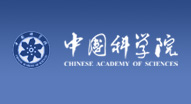时间:2018年4月10日上午10:00
地点:理化楼三楼会议室
报告题目:
White Graphene: from New Properties to Practical Applications
报告人:
Prof. Ying Chen Institute for Frontier Materials, Deakin University.
摘要:
Boron nitride (BN) nanosheets are an important member of two-dimensional (2D) nanomaterials and have a hexagonal structure similar to graphene. Because of its white color, they are also called as “white graphene”. BN nanosheets have many properties distinct to graphene and unique applications not available to graphene. Our current research focuses on synthesis technique, new property exploration and applications on environmental protection and energy storage. This presentation reports our recent research results in BN nanosheets from special mechanical properties, strong resistance to oxidation and protecting metals from oxidation and corrosion, excellent dielectric screening properties, to special surface adsorption ability. I will also present new applications of BN nanosheets including porous BN nanosheets for effective oil-water separation, functionalized BN nanosheet membranes and their fluidic devices, reusable substrates for surface enhanced Raman spectroscopy (SERS), and interlayers for improving cycling life of Li-S batteries. Further information can be found at http://www.deakin.edu.au/about-deakin/people/ying-ian-chen.
报告人简介:
Professor Ying Chen is the Alfred Deakin Professor and Chair of Nanotechnology at the Institute of Frontier Materials of Deakin University, Australia. He is well-known and respected internationally for his work in nanomaterials and nanotechnology. His invention of a ball-milling and annealing method for the mass production of nanotubes and nanowires has made a significant impact on the emerging nanotube industry. The team he has put together is a world leader in nanomaterials production and commercialization. His current research is focused on developing different synthetic methods (ball milling and annealing method, chemical/physical vapour deposition, and mechanical alloying) and new applications (energy storage in batteries, capacitors, solar cells and drug delivery) for a variety of nanomaterials including nanotubes (C and BN), nanosheets, nanowires, nanorods, nanoparticles, and nano thin films(graphene).
Professor Ying Chen obtained his University degree from Tsinghua University in Beijing, China and a PhD degree from the University of Paris-Sud, France. He had worked at the Australian National University, Canberra for 15 years before moving to Deakin University in 2009. He has published over 300 publications and is listed by the ISI Web of Knowledge as the top author on two subjects of nanotubes and ball milling. He has contributed to three bestselling books on nanotechnology published by CRC Press. His publications have been cited more than 9000 times over the past 10 years with an H factor of 49. Professor Chen is the Fellow of Institute of Physics, member of American Physics Institute, Materials Research Society, and Australian Materials Union. He has been awarded several prestigious awards, including QEII/ARF fellowships from the Australian Research Council and 1000 talented professorship in 2011. He has been given keynote and invited presentations at international conferences every year.
[1]. Li et al, “Atomically Thin Boron Nitride: Unique Properties and Applications”, Advanced Functional Materials, 26 (2016) 2594–2608.
[2]. Falin, et al, “Mechanical properties of atomically thin boron nitride and the role of interlayer interactions”, Nature Communications, 8:15815 (2017) DOI: 10.1038 /ncomms15815.
[3]. Li et al, “Strong Oxidation Resistance of Atomically Thin Boron Nitride Nanosheets”, ACS Nano., 8 (2) (2014) 1457–1462
[4]. Li et al, “Dielectric Screening in Atomically Thin Boron Nitride Nanosheets”, Nano Letters, 15 (1) (2015) 218–223
[5]. Cai et al, “Molecule-Induced Conformational Change in Boron Nitride Nanosheets with Enhanced Surface Adsorption”, Advanced Functional Materials, 26(45) (2016) 8202–8210.
[6]. Lei et al, "Porous Boron Nitride Nanosheets for Effective Water Cleaning", Nature Communications, 4 (2013)1777
[7]. Lei et al, “Boron Nitride Colloidal Solutions, Ultralight Aerogels and Freestanding Membranes through One-step Exfoliation and Functionalization” Nature Communications, 2015 DOI: 10.1038/ncomms9849.
[8]. Qin, et al, “High and Stable Ionic Conductivity in 2D Nanofluidic Ion Channels between Boron Nitride Layers”, J. Am. Chem. Soc. 139 (2017) 6314−6320.
[9]. Cai et al “Boron Nitride Nanosheets Improve Sensitivity and Reusability of Surface Enhanced Raman Spectroscopy”, Angew. Chem. Int Ed, 55(29) (2016) 8405-9.
[10] . Ye et al, “Functionalized Boron Nitride Nanosheets/graphene Interlayer for Fast and Long-Life Lithium-Sulfur Batteries”, Advanced Energy Materials, 7 (2017) 1602380. (Front Cover Picture of the volume).




